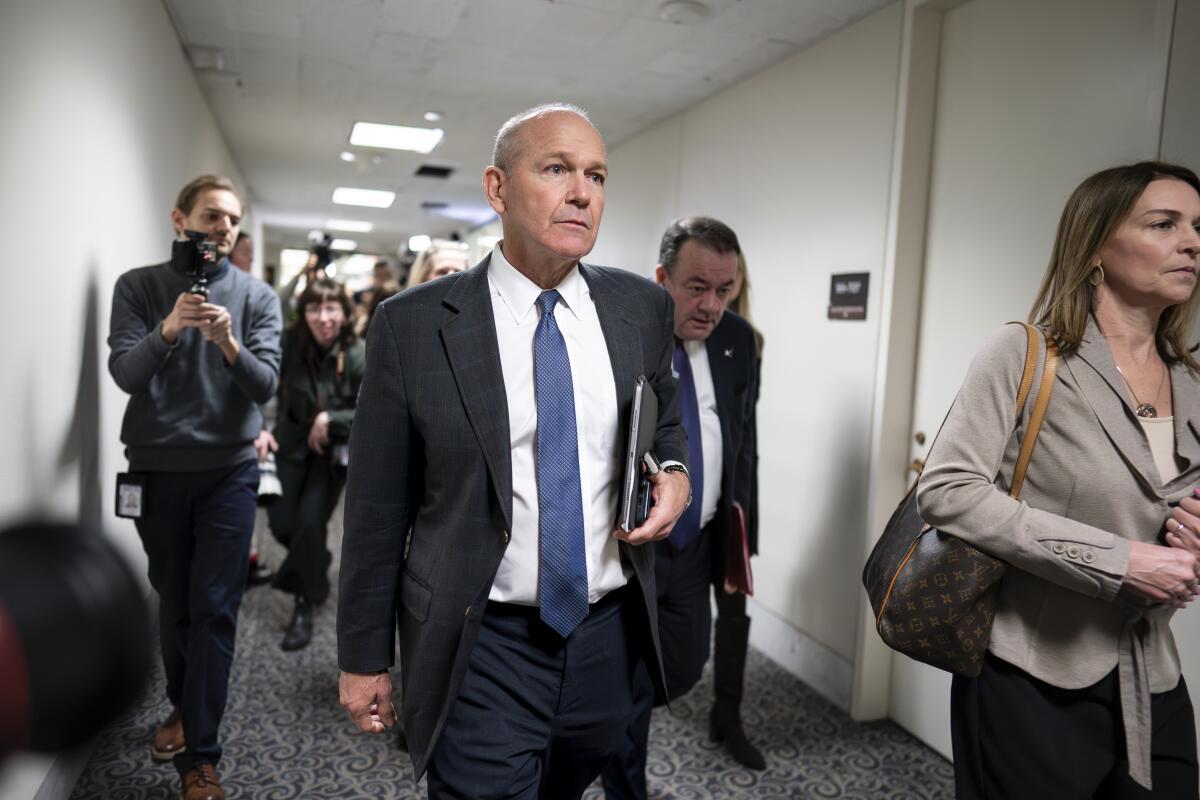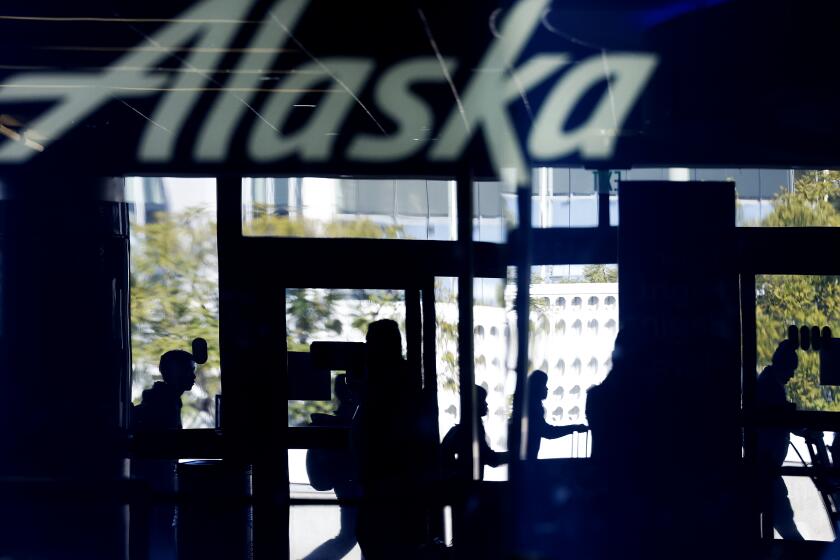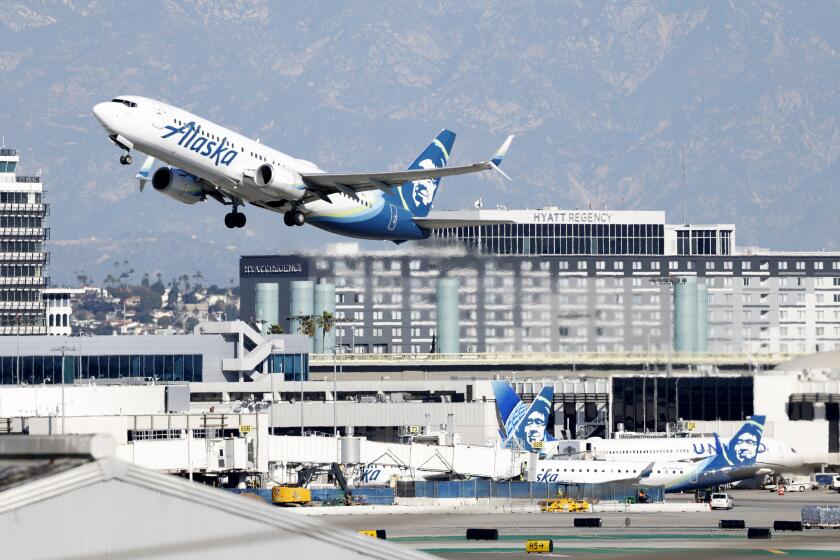Boeing Max 9s to return to skies less than a month after a panel blew off midflight

- Share via
Federal Aviation Administration officials have cleared the runway for Boeing’s 737 Max 9 to fly again, less than a month after a portion of an Alaska Airlines plane blew off midflight over Oregon.
The FAA announced it was greenlighting an inspection and maintenance process for the 171 Boeing 737 Max 9 aircraft currently grounded, most of them belonging to Alaska and United Airlines. Should the planes pass inspections, they’re likely to be given clearance to fly this weekend.
“The exhaustive, enhanced review our team completed after several weeks of information gathering gives me and the FAA confidence to proceed to the inspection and maintenance phase,” FAA Administrator Mike Whitaker said in a statement Wednesday.
Alaska announced on social media that it intends to fly some such aircraft by Friday, while United aimed for Sunday.
Answers to your questions about how the in-flight blowout of a plug on an Alaska Airlines plane could affect flights in the near future.
“No aircraft will be returned to the skies until rigorous inspection is completed based on FAA requirements and Alaska standards to ensure airworthiness,” an Alaska statement issued Wednesday evening said.
The FAA also noted that it would not allow Boeing to expand production of its Max fleet, including the embattled 737 Max 9. The action comes as the FAA continues to investigate Boeing.
“Let me be clear: This won’t be back to business as usual for Boeing,” Whitaker said. “We will not agree to any request from Boeing for an expansion in production or approve additional production lines for the 737 Max until we are satisfied that the quality control issues uncovered during this process are resolved.”
Both Alaska and United reported loose bolts in their 737 Max 9 jets during in-house inspections in the weeks following the Jan. 5 flight. But they could not return the planes to service until Boeing and the FAA agreed on a plan for inspections and repairs.
United grounded its 79 Max 9 aircraft on Jan. 6, following Alaska grounding all 65 of its Max 9 planes on the evening of Jan. 5.
Those actions happened soon after a door plug from a Max 9 blew open Jan. 5 shortly after that Alaska Airlines plane took off from Portland, Ore., en route to Ontario. The incident happened at roughly 16,000 feet as the aircraft was nearing cruising altitude.
After a door plug on a 737 Max 9 blew open mid-flight, CEO Dave Calhoun told Boeing employees there would be ‘100% transparency’ around ‘our mistake.’
There were no injuries — though a teenager had his shirt ripped off — among the 171 passengers despite the plane being forced to make an emergency landing with a gaping hole in its side. Aviation experts say the outcome could have been much worse had a passenger been seated next to the plug that blew out or had the plane ascended to 30,000 feet. By chance, the seat was unoccupied.
By Jan. 6, Alaska had canceled 160 flights, which affected travel for approximately 23,000 fliers. Since then, the company estimated that it has nixed 110 to 150 flights a day. United has canceled about 160 to 170 flights a day.
The FAA said its enhanced maintenance procedures would include an inspection of specific bolts, guide tracks and fittings, midcabin exit door plugs and parts, retightening of fasteners and repairs to any damage found.
Transportation officials say the midair blowout on Alaska Airlines Flight 1282 could have been calamitous if it had happened a little later in the flight.
Whitaker said more scrutiny was necessary in the immediate aftermath of the Max 9 groundings.
“The quality assurance issues we have seen are unacceptable,” Whitaker said. “That is why we will have more boots on the ground closely scrutinizing and monitoring production and manufacturing activities.”
Part of the increased oversight includes capping expanded production of Max 9s by Boeing to ensure accountability.
While the FAA regulates, the National Transportation Safety Board is conducting its own investigation into the Alaska Airlines flight.
Boeing has promised cooperation with both investigations.
More to Read
Sign up for Essential California
The most important California stories and recommendations in your inbox every morning.
You may occasionally receive promotional content from the Los Angeles Times.














